39 how to read food labels diabetes
How to read food labels if I have diabetes or prediabetes? Knowing how to read food labels is a very useful skill to improve your eating and better manage or help to prevent the progression of diabetes. There are three main things on the food labels to look out for: nutrition information panel, ingredient list, and Healthier Choice Symbols. 1. Nutrition information panel (NIP) PDF how To Read food labels HoW To ReaD FooD LaBeLs You don't even have to look at "Sugars" on the label. Try choosing foods that are less than or equal to 25 grams of total carbohydrate per serving. Choose foods that have 3 or more grams of fiber per serving. step 3. look at the "Calories" and the "Total fat." Try choosing foods that are 0-3 grams of total fat for every 100 calorie serving.
How to Read Nutrition Labels When You Have Diabetes Getting Past the Guilt of Type 2. See how one patient learned to manage her weight and diet.
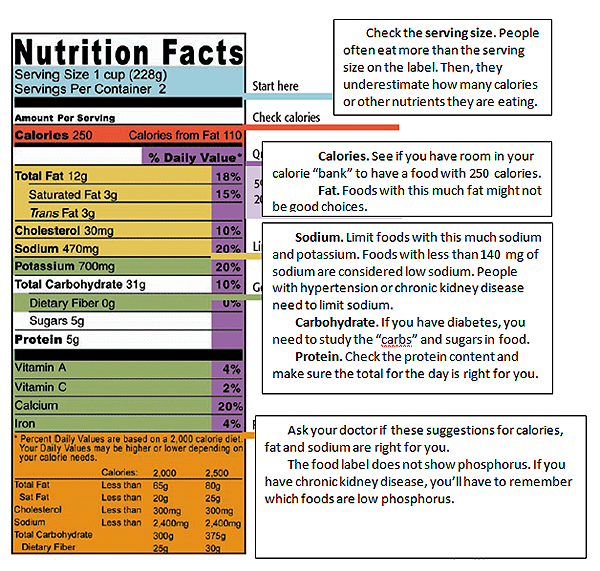
How to read food labels diabetes
How to Read Food Labels When You Have Type 2 Diabetes Quick Tip: When you see sugar-free on a label it means less than 0.5 grams of sugar per serving. No sugar added doesn't mean low or no-carb. A lot of food labels say "no sugar added" but these foods might have tons of carbs. No sugar added simply means no sugar was added during processing or packaging. Sugar alcohols have hidden carbs. PDF Label Reading Basics for Diabetes - Veterans Affairs This food has 300 mg of sodium per ½ cup serving. It is suggested to limit salt intake to 1500 mg per day when you have diabetes. With pre-diabetes, your sodium intake should still be monitored. The goal is less than 2300 mg per day. A good first step is to not have a salt shaker at home. Total Fat The area on the label describing How to Read Food Labels When You Are Diabetic - Diabetics Weekly Study the Carbohydrate Content in Detail This is the most important aspect of how to read food labels when you have diabetes. The total amount of carbohydrates breaks down into complex carbohydrates, sugar, and fiber. Don't hone in on zero-sugar foods, as foods like milk and fruit contain natural sugars.
How to read food labels diabetes. How to read nutrition facts labels - Diabetes Care Community Identify foods suitable to special diets (for example, low-sodium or low-fat diets). Find foods that will help you to increase or decrease your intake of a particular nutrient (for example, if you want to increase the amount of fibre, or decrease the amount saturated fat in your diet). 5 easy steps to reading a Nutrition Facts Table Understanding food labels | Diabetes UK Follow these tips to become expert at understanding labels in minutes: With traffic light labels, go for green, occasionally amber, and red only as a treat. Reference intake (RI) percentages are given per portion, and indicate how much the portion contributes to the amount of calories, fat, sugars and salt an average adult should have each day. Reading Food Labels When You Have Diabetes | Kaiser Permanente Protein. This comes from foods such as meat, poultry, seafood, eggs, beans, peas, soy products, nuts, and seeds. Adding a little protein that is low in saturated fat to each meal and snack can help you feel full longer. Sodium. Many packaged and canned foods have a lot of sodium (salt). Reading Food Labels When You Have Diabetes - WebMD If a package has four servings and you eat the whole thing (like a bag of crunchy snacks), you get 4 times the calories, fat, and everything else listed on the label. Calories and Calories From Fat...
Reading Food Labels When You Have Diabetes - MedicalRecords.com Introduction. When a food comes in a package, take a look at the Nutrition Facts label and ingredient list on the package. Start with the "% Daily Value" column on the food label. A food is considered low in a specific nutrient (such as fat, saturated fat, carbohydrate, or sodium) if it has 5% or less of the daily value. PDF How to Read the Food Label - Risk Services Food Label You can make healthier food choices by reading the "Nutrition Facts" label . Serving size: Look here first! Is your serving the same as the one on the label? • If you eat twice the serving size, you double the . calories and other nutrient values. • If you have diabetes or follow a specific meal plan, the serving size on the ... Reading food labels: Tips if you have diabetes - Mayo Clinic Look for foods with 3 or more grams of fiber. Put sugar-free products in their place Sugar-free doesn't mean carbohydrate-free. Sugar-free foods may play a role in your diabetes diet, but remember that it's equally important to consider carbohydrates as well. A sugar-free label means that one serving has less than 0.5 grams of sugar. Learn how to read food labels - Diabetes Care Community People with diabetes have a variety of food considerations to keep in mind. Learn how to read food labels and you'll get a head start in planning meals to meet our diabetes management targets. The first thing to check on a label is the 'serving size'. This is the manufacturer's suggested portion for one person.
PDF Label Reading - Michigan Medicine Adult Diabetes Education Program - 1 - Label Reading . Use the Nutrition Facts on food labels to figure out how to work a food into your meal plan. Learn about what foods are healthier choices by looking at the label. Look at the serving size and the total carbohydrate (carbs). • Serving size: Check the serving size and compare to what you ... Food Labels | CDC Check the Serving size first. All the numbers on this label are for a 2/3-cup serving. This package has 8 servings. If you eat the whole thing, you are eating 8 times the amount of calories, carbs, fat, etc., shown on the label. Total Carbohydrate shows you types of carbs in the food, including sugar and fiber. Decoding Diabetes: How to Read Nutrition Labels | Accu-Chek The calories in the foods you eat are made up of fat, protein, and carbohydrates. Nutrition labels are typically made based on the assumption that you have a daily diet of 2,000 calories (kilocalories). Some labels will have a footnote that expand on this concept, providing numbers for both 2,000 and 2,500-calorie (kilocalorie) diets. Nutrients Reading Food Labels | ADA - American Diabetes Association Put food labels to work. The Nutrition Facts labels on foods are really the key to making the best choices. We'll cover the basics so that these labels make shopping easier for you. You've heard it all. From carb-free to low-carb, to whole and empty carbs, it's hard to know what it all means. Blood sugar highs and lows aren't always ...
Reading Food Labels to manage Diabetes Generally, most food packaging works with a colour code system, with red, amber and green colours to show high (red), medium (amber) and low (green) nutrition proportions.

Important Tips About the Nutrition Facts Label for People With Diabetes - Diabetes Self-Management
Learning To Read Labels :: Diabetes Education Online On a nutrition food label, subtract the fiber from the total carbohydrate amount. When you read food labels, the grams of sugar are already included in the total carbohydrate amount, so you do not need to count this sugar amount separately. The grams of sugar listed include both natural sugars, from fruit or milk, and added sugars.
PDF Label reading basics for diabetes - Veterans Affairs Label Reading Basics for Diabetes Nutrition and Food Services (05/2020) Serving Size • The serving size is the portion size used for all the values on the label. • Different foods have different serving sizes. • The serving size on this label is 2/3 cup. Servings per Container • Indicates the number of
Food Labels and How to Read Them - Diabetesnet.com Packaged foods have a "Nutrition Facts" label that provides nutritional information, including the number of calories and the grams of protein and fat. These labels also give the exact number of grams of carbohydrate contained in a serving and the size of this serving.
PDF TO CARE 4 YOURSELF READING A NUTRITION FACTS LABEL - novoMEDLINK Talk with your diabetes care team about how many calories you need each day. Then use this line to see if the food fits into your plan. You can read the Nutrition Facts labels to compare calorie counts of similar foods to find the lowest-calorie option. Total fat This line tells you how much fat is in a serving of this food.
Label reading 101 - Healthy Food Guide Food packaging labels can be a small-print minefield of numbers, nutrients and ingredients. But fear not as HFG helps you decode them! You're standing in the supermarket aisle looking for a wholegrain loaf of bread. There are 12 types staring back at you and you have no idea which one to choose. Sound familiar? It's […]
Understanding food labels fact sheet - NDSS Food labels will typically include a nutrition information panel, list of ingredients, the 'use by' or 'best before' date and identify potential food allergens and additives. Food labels also tell you the amount of carbohydrates (carbs) you eat and drink. This can help you manage your blood glucose levels.
How to Read the New Food Label On the new label, added sugars are listed under total sugars. The word "includes" is used before added sugars to indicate they are already included the grams of total sugars. Added sugars are from table sugar, syrups and honey, and sugars from concentrated fruit or vegetable juices. Keep added sugars as low as possible. Protein
Nutrition Facts Labels and Diabetes If you have diabetes, eating the right foods is your foundation for staying healthy. Reading the Nutrition Facts labels on foods is an important part of this mission. Nutrition Facts Labels and Diabetes

Learn About Food Labels For Healthy Food Choices | The National intended for Healthy Food Labels ...
How to Read Food Labels When You Are Diabetic - Diabetics Weekly Study the Carbohydrate Content in Detail This is the most important aspect of how to read food labels when you have diabetes. The total amount of carbohydrates breaks down into complex carbohydrates, sugar, and fiber. Don't hone in on zero-sugar foods, as foods like milk and fruit contain natural sugars.

Learning To Read Labels :: Diabetes Education Online | Diabetes education, Reading food labels ...
PDF Label Reading Basics for Diabetes - Veterans Affairs This food has 300 mg of sodium per ½ cup serving. It is suggested to limit salt intake to 1500 mg per day when you have diabetes. With pre-diabetes, your sodium intake should still be monitored. The goal is less than 2300 mg per day. A good first step is to not have a salt shaker at home. Total Fat The area on the label describing
How to Read Food Labels When You Have Type 2 Diabetes Quick Tip: When you see sugar-free on a label it means less than 0.5 grams of sugar per serving. No sugar added doesn't mean low or no-carb. A lot of food labels say "no sugar added" but these foods might have tons of carbs. No sugar added simply means no sugar was added during processing or packaging. Sugar alcohols have hidden carbs.

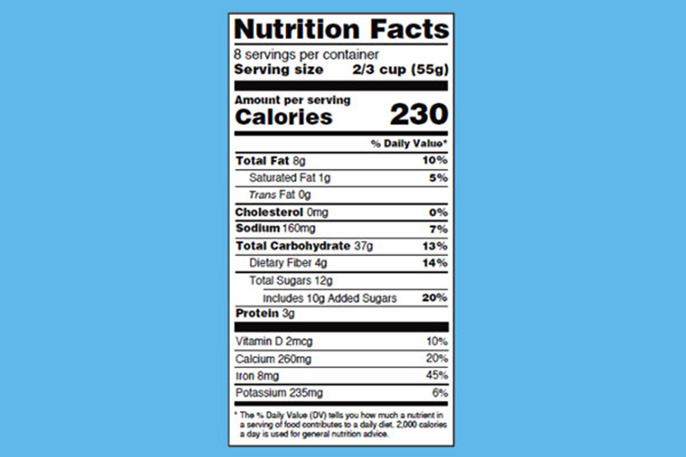


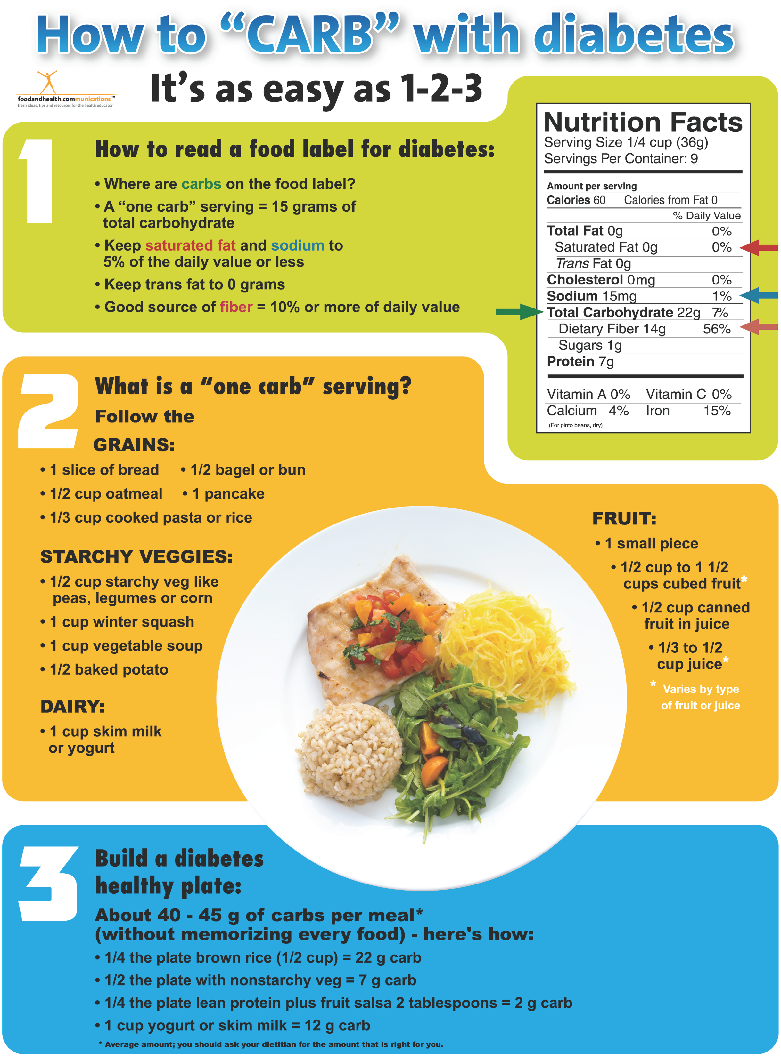

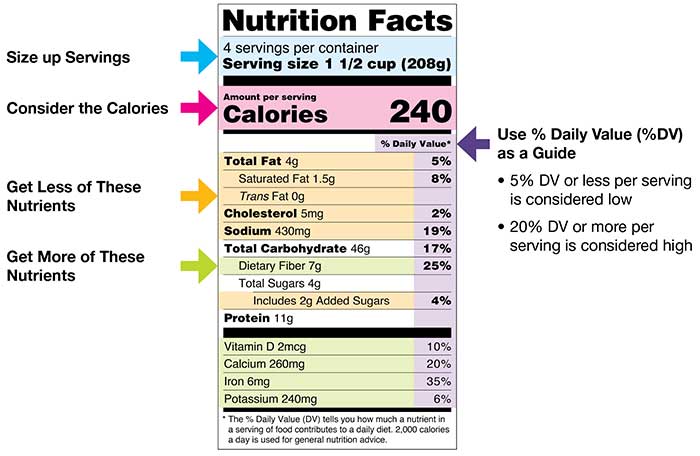

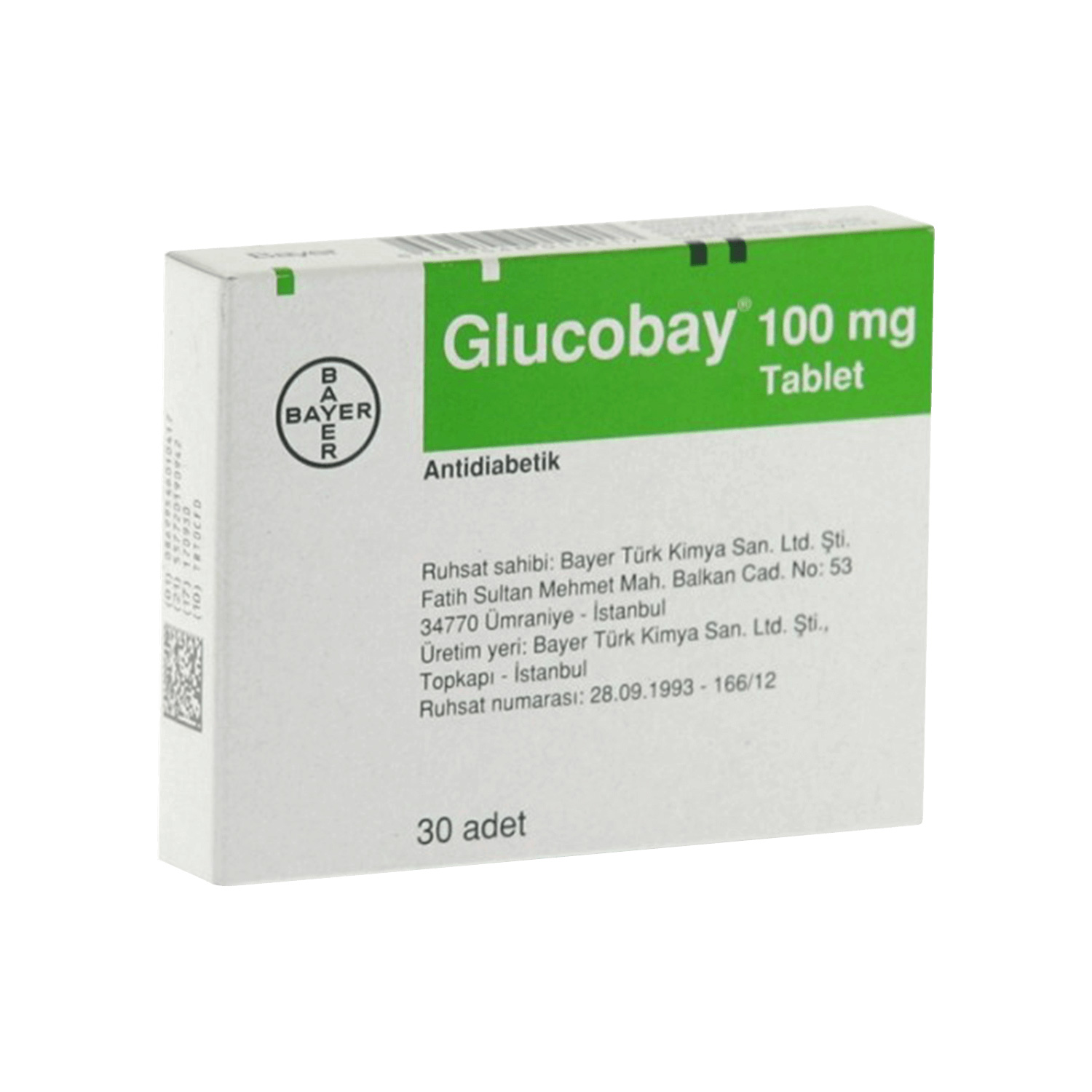
Post a Comment for "39 how to read food labels diabetes"